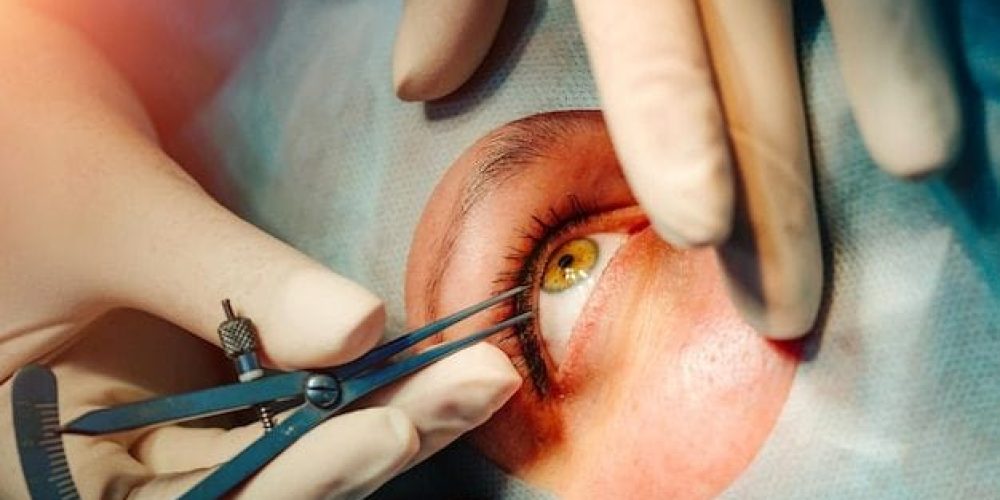Corneal Transplantation
- Home
- Corneal Transplantation
Have questions? We're here to help!

Corneal Transplantation
Corneal Transplant: Restoring Clear Vision with Advanced Treatment
A corneal transplant, also known as a corneal graft, is a surgical procedure in which a damaged or diseased cornea is replaced with a healthy donor cornea. This operation is crucial for individuals whose vision has been severely impaired due to conditions like keratoconus, corneal scarring, or other corneal disorders. Corneal transplantation is highly effective in restoring sight and significantly improving the quality of life for those with compromised vision.
What is a Corneal Transplant?
A corneal transplant involves replacing a damaged or unhealthy cornea with a healthy one from a donor. The cornea is the transparent, front layer of the eye that is responsible for focusing light into the eye. When the cornea becomes damaged, either due to injury, infection, or disease, it can result in blurred vision. The corneal transplant procedure restores clarity and function to the eye, offering patients a chance to regain normal sight.
Why is a Corneal Graft Needed?
A corneal transplant may be required when an individual suffers from severe visual impairment caused by conditions such as:
Corneal Scarring: Resulting from trauma, infections, or previous surgeries, corneal scarring can blur vision.
Keratoconus: A condition in which the cornea becomes thin and bulges outwards, leading to distorted vision.
Fuchs’ Dystrophy: An inherited condition that causes the cornea to swell, impairing clarity.
Corneal Dystrophies: A group of inherited disorders that affect the cornea’s clarity and thickness.
Different Types of Corneal Transplantation
There are various types of corneal transplantation surgeries, each aimed at treating specific conditions:
Penetrating Keratoplasty (PK): In this procedure, the entire cornea is replaced, making it the most common form of corneal transplantation.
Deep Anterior Lamellar Keratoplasty (DALK): This type replaces only the front layers of the cornea, leaving the deeper layers intact. It is typically performed in cases where the inner layers are still healthy.
Descemet’s Stripping Endothelial Keratoplasty (DSEK): For conditions like Fuchs’ dystrophy, DSEK replaces only the inner layers of the cornea, preserving the outer layers.
How is a Corneal Graft Performed?
The corneal transplantation surgery involves the following steps:
Anesthesia: Local anesthesia is administered to numb the eye area, ensuring the patient remains comfortable.
Removal of the Damaged Cornea: The surgeon removes the damaged cornea and prepares the eye for the donor tissue.
Donor Cornea Placement: A healthy donor cornea is carefully inserted into the eye, and the surgeon secures it with tiny sutures.
Closure: The incision is closed, and the eye is protected to begin the healing process.
Recovery After Corneal Transplantation Surgery
Post-surgery, the recovery process can take several months, and patients are advised to follow their doctor’s instructions closely. Key points during recovery include:
Regular Follow-ups: Routine visits to the ophthalmologist to monitor progress and detect any potential complications.
Medication: Eye drops are prescribed to prevent infections and inflammation.
Protection: The patient may need to wear an eye shield during sleep and take extra precautions to protect the eye.
Benefits of Corneal Transplantation
Undergoing corneal transplantation can provide numerous benefits, such as:
Restoring Vision: The most significant benefit is the restoration of clear vision, allowing individuals to resume their daily activities without difficulty.
Improved Quality of Life: With clearer sight, individuals can return to activities like reading, driving, and working, which were previously challenging.
Long-term Success: Corneal graft surgeries generally have high success rates when performed by experienced surgeons.
Risks and Complications of Corneal Graft Surgery
While corneal transplantation is considered a safe procedure, there are some risks, such as:
Rejection: The body may reject the new cornea, requiring medical intervention.
Infections: As with any surgery, there is a risk of infection during the recovery period.
Increased Eye Pressure: Some patients may experience elevated eye pressure, which can lead to glaucoma.
Vision Problems: There is a possibility of developing astigmatism or other visual issues after the surgery.
Who is Suitable for Corneal Graft Surgery?
Individuals who have the following conditions may benefit from a corneal transplant:
Severe Vision Loss: Those who have experienced a significant decrease in vision due to corneal diseases.
Failed Vision Correction: Patients who have not seen improvement from glasses, contacts, or other corrective methods.
Chronic Corneal Conditions: Those with ongoing corneal issues that cannot be managed with medications or other treatments.
Why Choose Synovia Health for Corneal Graft Surgery?
Synovia Health provides expert care for individuals seeking corneal transplant surgery. Our team of skilled ophthalmologists is dedicated to helping patients through every step of the procedure, from pre-surgery consultations to post-surgery care. We ensure that each patient receives personalized care for the best possible outcomes.
Conclusion
A corneal transplant can be life-changing for individuals whose vision has been severely impacted by corneal diseases. Whether you are dealing with scarring, keratoconus, or other eye disorders, this surgery can restore clarity and allow you to regain your independence. At Synovia Health, we are committed to providing comprehensive care and expert guidance throughout your journey to improved vision.
